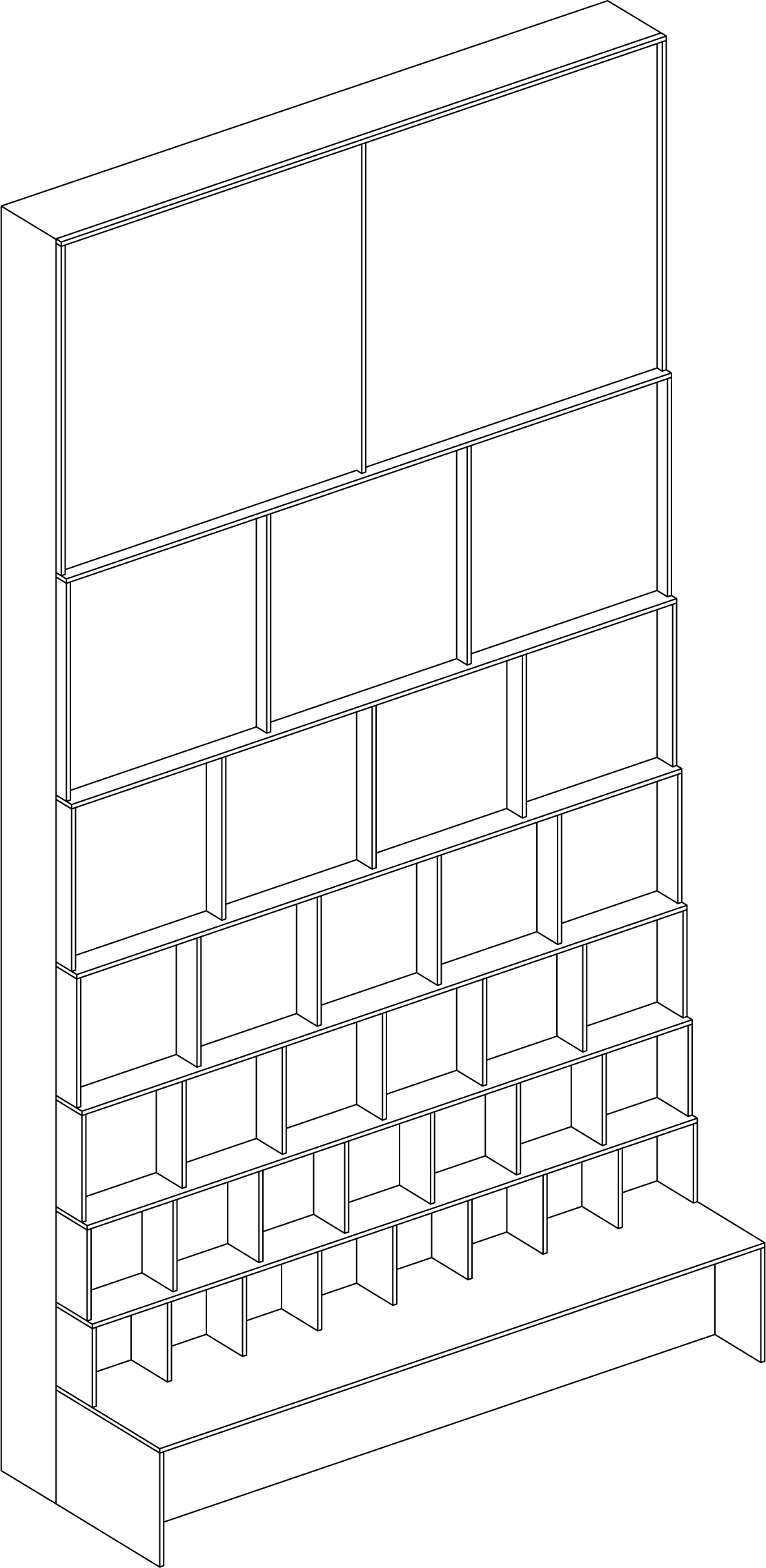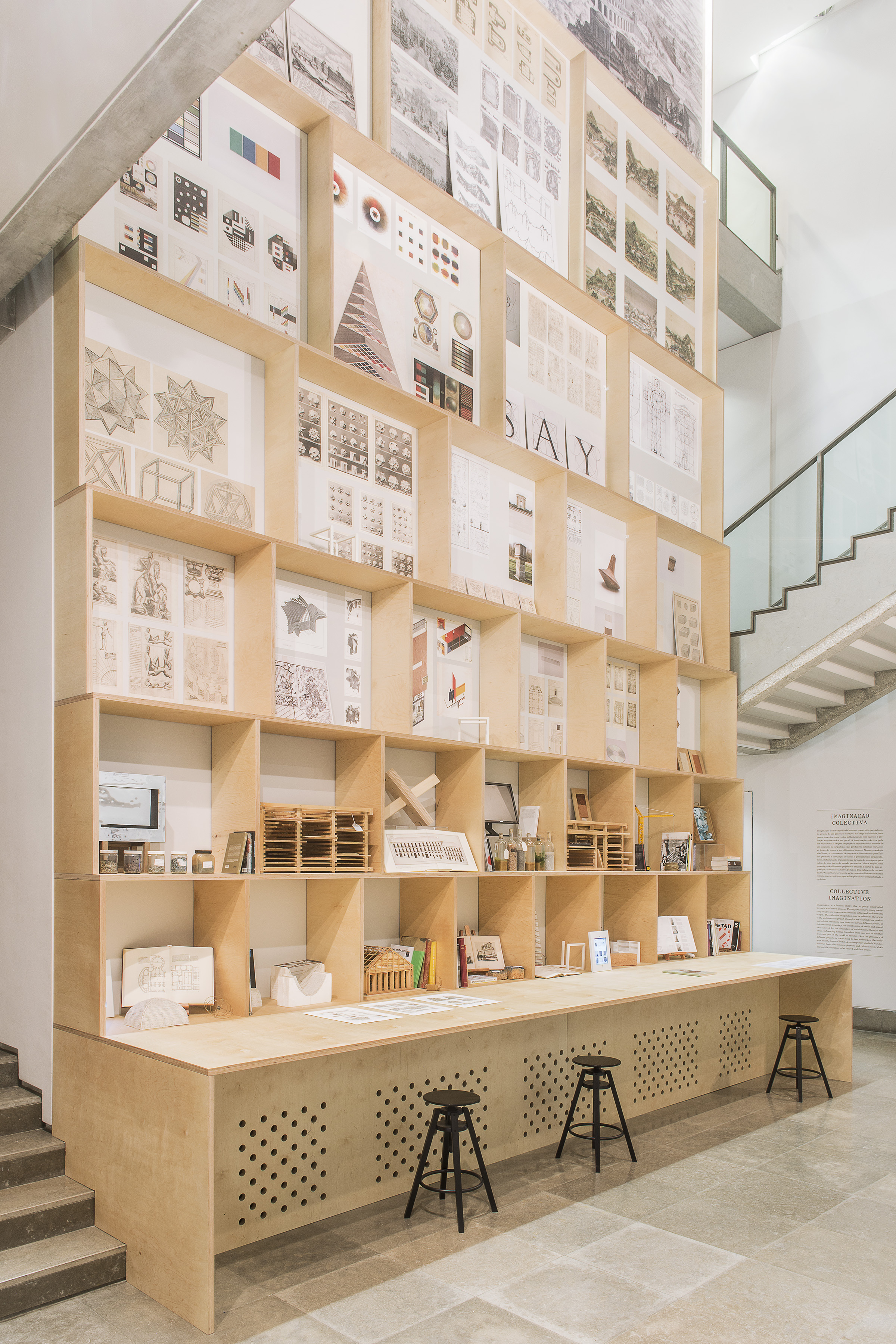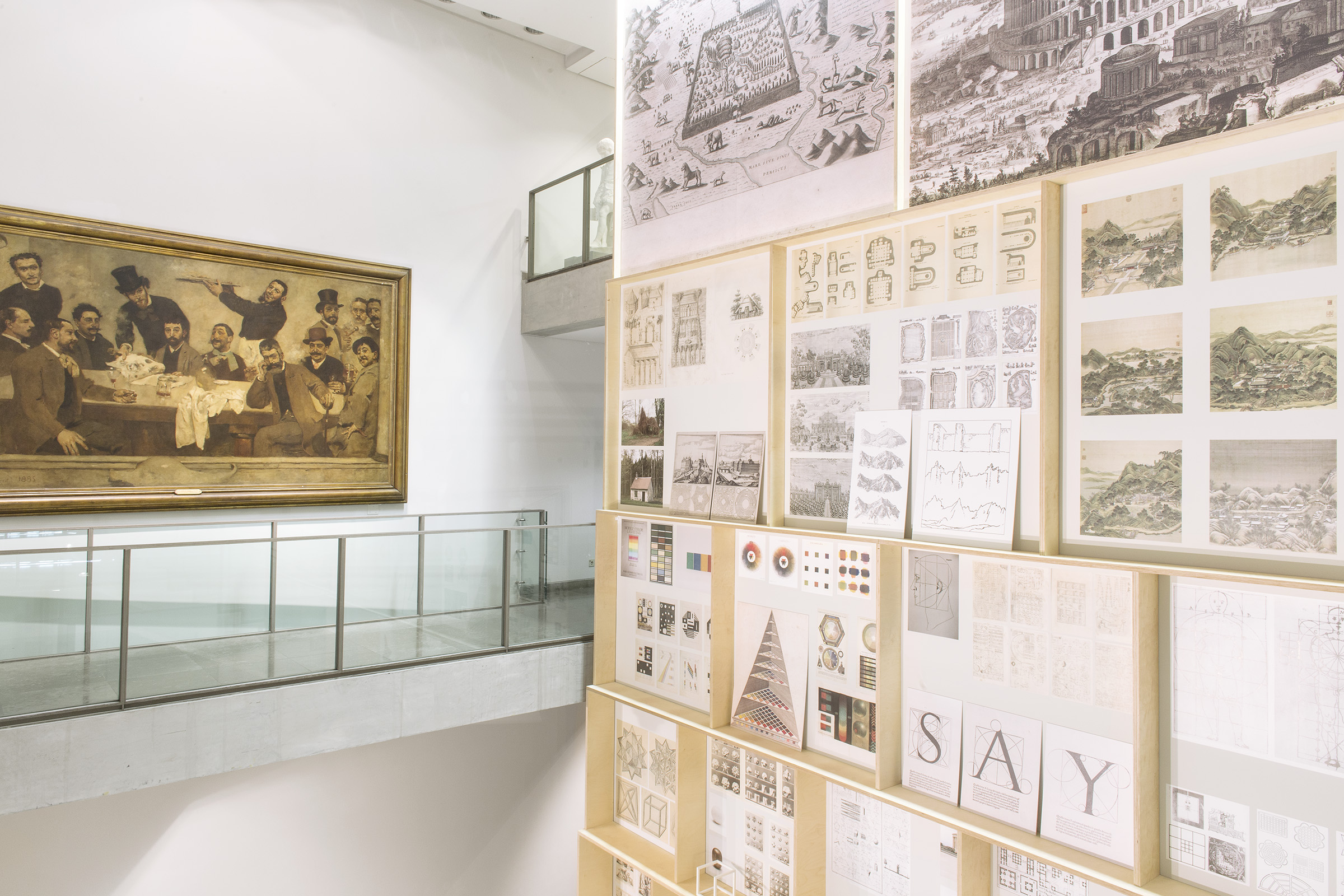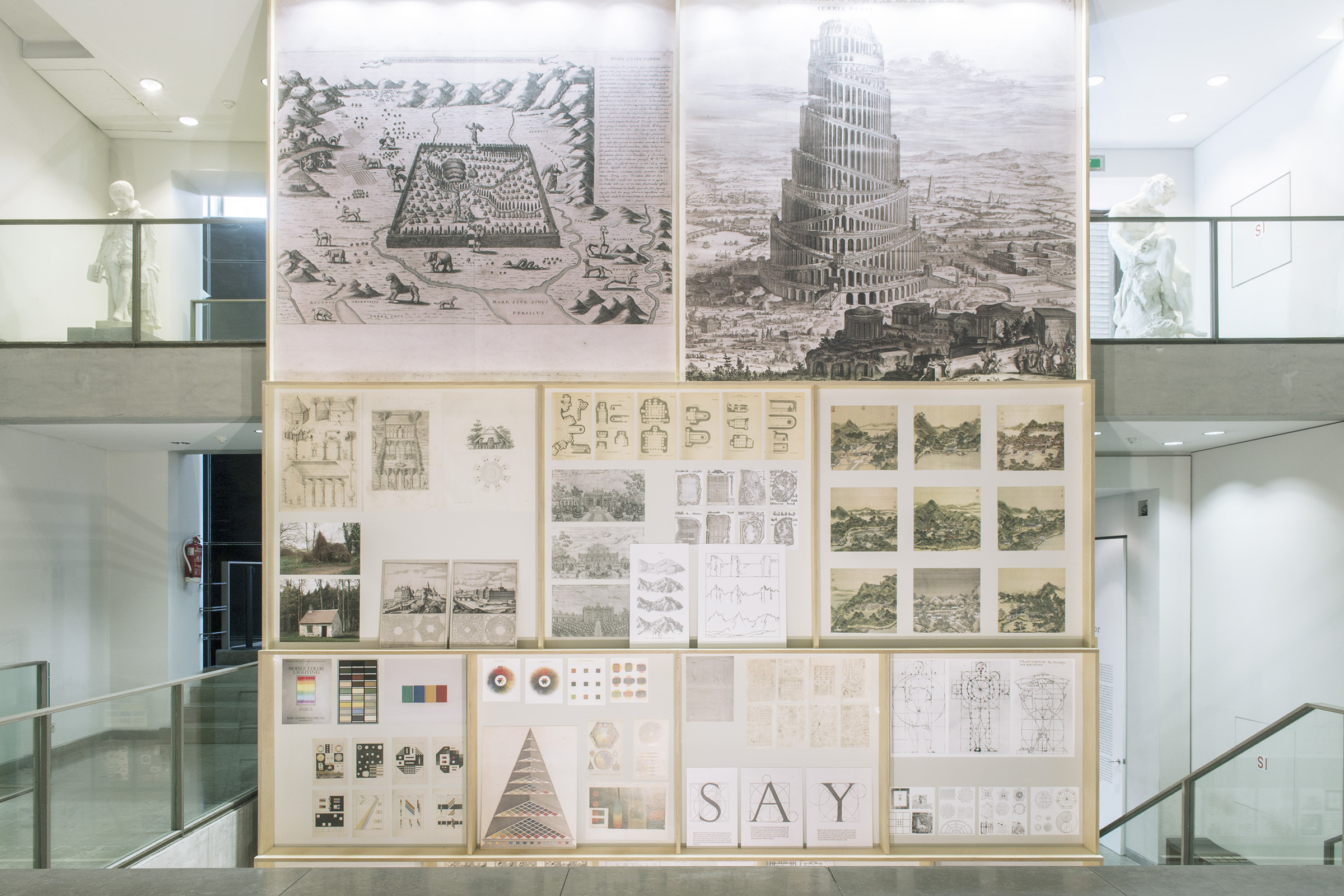




Inner Space - The Cabinet
Exhibition design and curatorship
Lisbon Architecture Triennale
Chiado Museum of Contemporary Arts, 2019
The exhibition Inner Space is part of an ongoing research project into the construction of the architectural imagination. It sets out to investigate the space between inner and outer reality, looking to identify the moments in which the two realms interact most vividly.
Inner Space regards the imagination, and more precisely, the architectural imagination, as the critical process that makes the interplay between the two realms to happen, possible, creating the potential for a space to be inhabited and explored in itself.
We define imagination as the capacity to organise, structure and translate into other forms our own experience of the world. Such an experience may be direct, or it can be mediated by the encounter of a subject with imagery.
Imagination is thus a mental faculty strictly connected to rationality, and the dialectical relationship between the two fields has been defined and theorised on by numerous philosophers and scientists over the centuries.
Through Inner Space, we aim to bind the construction of the imagination with a parallel notion: the identification of imagination as an immersive territory that can be experienced, crossed and even inhabited.
Inner Space regards the imagination, and more precisely, the architectural imagination, as the critical process that makes the interplay between the two realms to happen, possible, creating the potential for a space to be inhabited and explored in itself.
We define imagination as the capacity to organise, structure and translate into other forms our own experience of the world. Such an experience may be direct, or it can be mediated by the encounter of a subject with imagery.
Imagination is thus a mental faculty strictly connected to rationality, and the dialectical relationship between the two fields has been defined and theorised on by numerous philosophers and scientists over the centuries.
Through Inner Space, we aim to bind the construction of the imagination with a parallel notion: the identification of imagination as an immersive territory that can be experienced, crossed and even inhabited.
The exhibition Inner Space identifies two parallel and closely interlinked movements involved in constructing architectural imagination: a collective one (”The Cabinet”), and an individual one (”The Denkraum”), with the two spheres complementing each other.
In the section dedicated to the construction of imagination as a collective process, the works are presented on a tall wooden installation known as the “Cabinet” (of Curiosities). This installation synthesizes the historical transition from a private form of knowledge—the studiolo at the bottom—to the wunderkammer in the middle, and finally to exhibitions, museums, and public collections at the top. The “Cabinet” serves as a repository for the shared tools of architecture (formes, representation tools, materials and construction methods…) that both allowed and supported the formation of collective imagination. The design of this exhibition structure, shaped like a cabinet, itself evokes the historical evolution in the transmission of culture. It facilitates the organization of exhibited works, offering various levels of reading and perception.
A third section of the exhibition identifies how architectural imagination is capable of nourishing other disciplines: from art to videogames, virtual reality, comic books and forensic investigation.
In the section dedicated to the construction of imagination as a collective process, the works are presented on a tall wooden installation known as the “Cabinet” (of Curiosities). This installation synthesizes the historical transition from a private form of knowledge—the studiolo at the bottom—to the wunderkammer in the middle, and finally to exhibitions, museums, and public collections at the top. The “Cabinet” serves as a repository for the shared tools of architecture (formes, representation tools, materials and construction methods…) that both allowed and supported the formation of collective imagination. The design of this exhibition structure, shaped like a cabinet, itself evokes the historical evolution in the transmission of culture. It facilitates the organization of exhibited works, offering various levels of reading and perception.
A third section of the exhibition identifies how architectural imagination is capable of nourishing other disciplines: from art to videogames, virtual reality, comic books and forensic investigation.